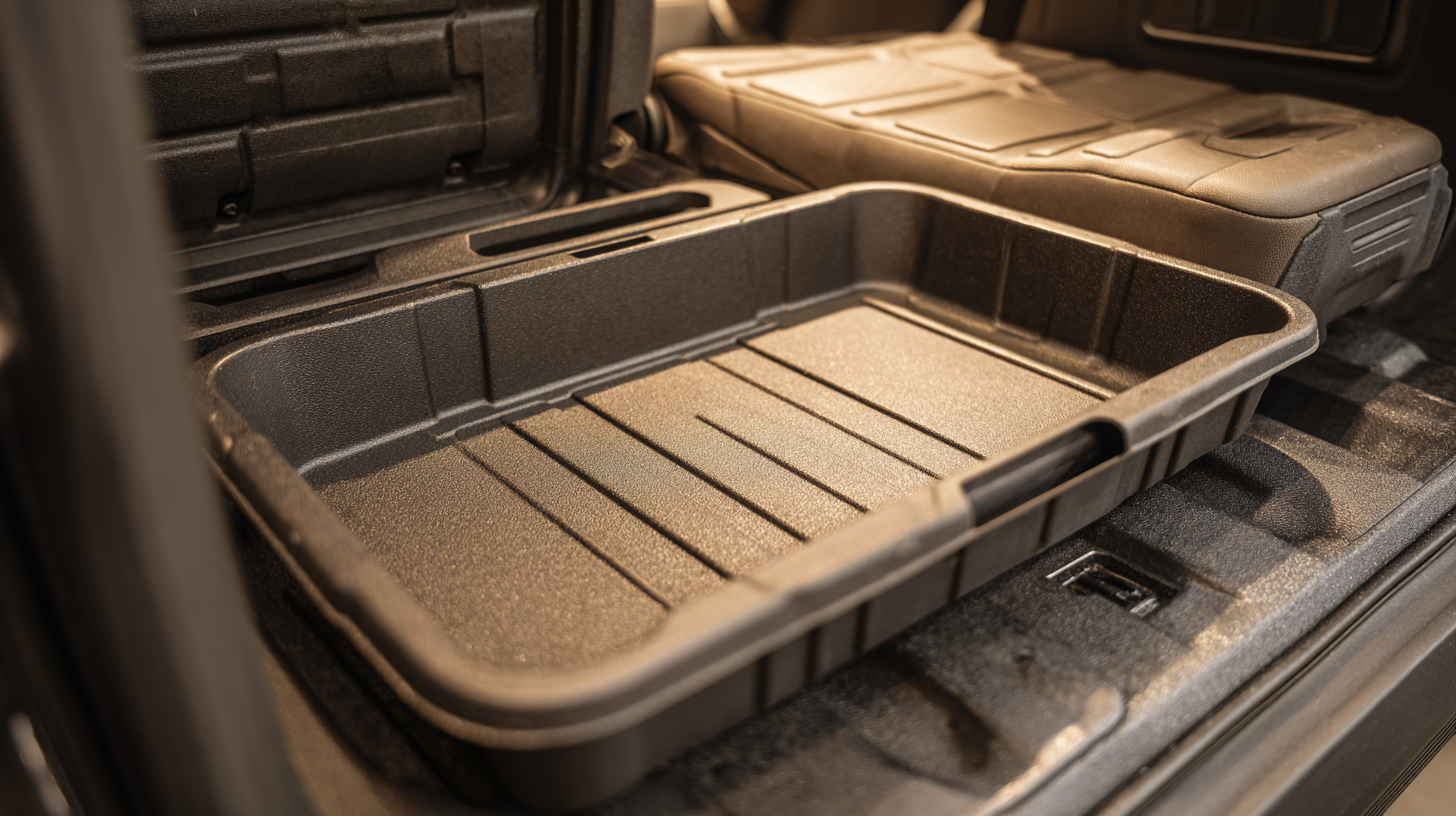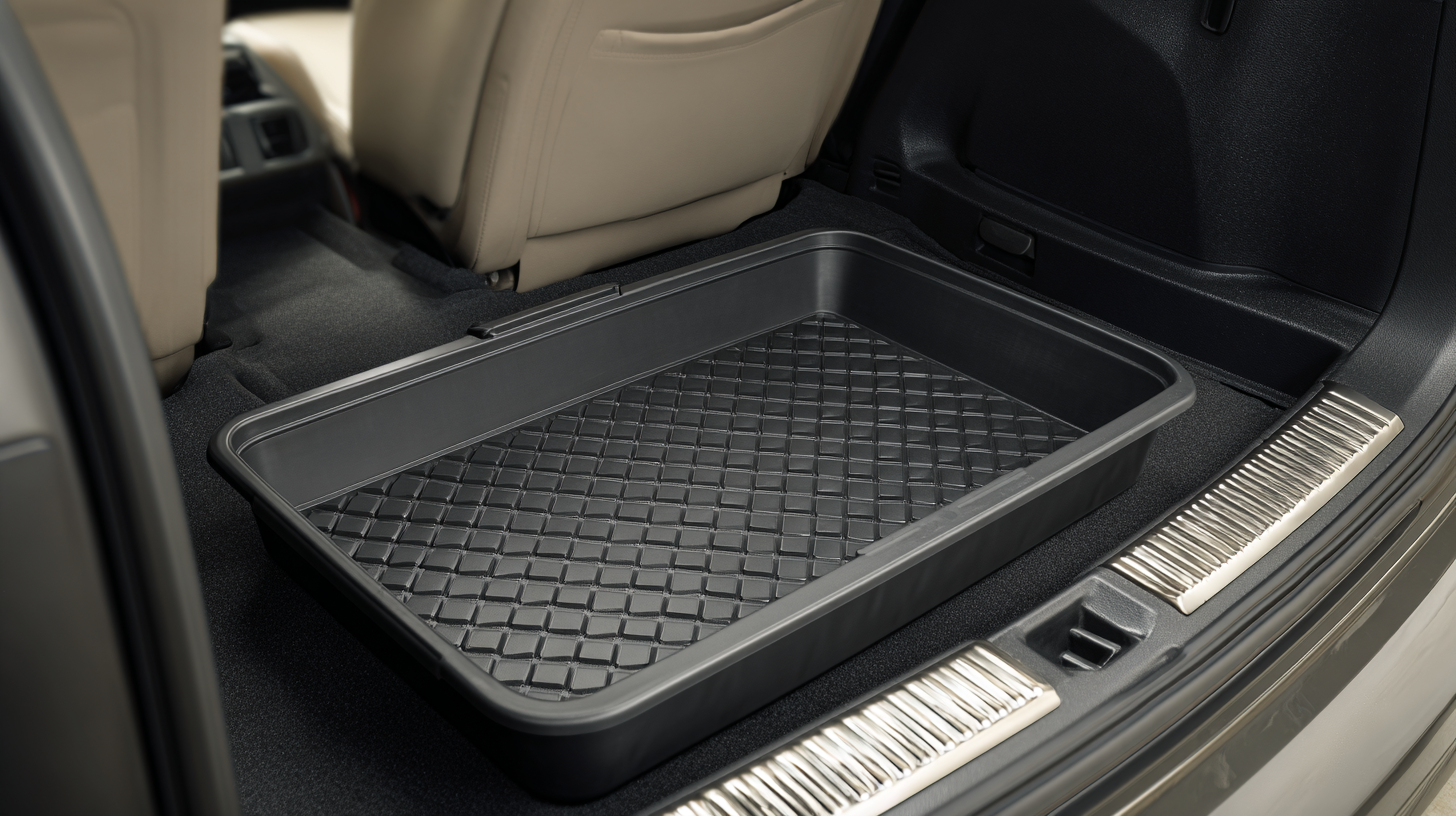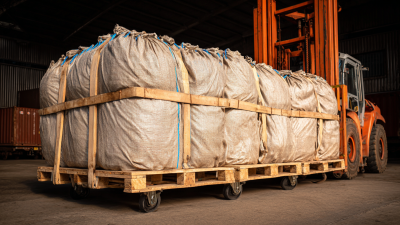
 In today's fast-paced environments, particularly in commercial kitchens and industrial settings, ensuring safety and organization is paramount. According to the National Safety Council, slips and falls account for over 25% of workplace injuries, underscoring the need for effective preventive measures. One innovative solution that has gained traction is the use of Anti Slip Tray Liners. These specialized liners not only provide a secure grip for items, preventing slippage and potential accidents, but also enhance overall organization by keeping items in their designated places.
In today's fast-paced environments, particularly in commercial kitchens and industrial settings, ensuring safety and organization is paramount. According to the National Safety Council, slips and falls account for over 25% of workplace injuries, underscoring the need for effective preventive measures. One innovative solution that has gained traction is the use of Anti Slip Tray Liners. These specialized liners not only provide a secure grip for items, preventing slippage and potential accidents, but also enhance overall organization by keeping items in their designated places.
A recent study by the Food and Drug Administration highlighted that integrating Anti Slip Tray Liners in food service establishments can significantly reduce the risk of cross-contamination and improve operational efficiency. As more businesses recognize the importance of safety and organization, adopting Anti Slip Tray Liners has become an essential practice for mitigating risks and promoting a well-structured workspace.
Anti-slip tray liners play a crucial role in enhancing both safety and organization in various industries, from healthcare to manufacturing. According to a report by the National Safety Council, nearly 30% of workplace injuries are caused by slips and falls, often linked to improperly organized surfaces. By utilizing anti-slip tray liners, organizations can significantly reduce the risk of these accidents. The textured surface of these liners prevents items from sliding, which is especially vital in high-paced environments where spills or sudden movements can lead to hazardous situations.
Moreover, effective organization is not merely about aesthetics; it's about efficiency and productivity. A study from The Lean Enterprise Institute found that workplace organization can improve efficiency by up to 25%. Anti-slip tray liners help maintain order by keeping tools, instruments, and materials secure in their designated spaces, preventing clutter and ensuring that essential items are readily accessible. As businesses increasingly focus on operational safety and efficiency, integrating anti-slip tray liners into daily practices emerges as a smart strategy that combines organization with the critical aspect of workplace safety.
When selecting the right anti-slip tray liner, it's essential to consider the materials and designs available, as they cater to different needs and environments. Generally, anti-slip liners can be categorized into rubberized, foam, and adhesive varieties. According to a 2021 industry report by the International Safety Equipment Association, rubberized liners are particularly effective in industrial settings due to their high durability and resistance to spills, making them suitable for heavy-duty applications. These liners not only prevent slippage but also protect surfaces from scratches and damage.
On the other hand, foam liners provide a softer touch and are ideal for food service or delicate items, as they reduce the risk of breakage. A study published by the Food Safety Institute highlights that using foam liners in commercial kitchens can reduce accidents by up to 30%, contributing significantly to operational safety. Finally, adhesive liners offer a versatile option, sticking directly to trays and providing a non-slip surface without the bulkiness of traditional liners. Their ability to conform to various surfaces ensures a reliable grip in diverse settings, from restaurants to warehouses. Choosing the right type of anti-slip tray liner is crucial for enhancing safety and promoting effective organization in any workspace.

When it comes to enhancing safety and organization in various settings, effective installation of anti-slip tray liners is crucial. The first step is selecting the right material that suits your specific needs. Look for trays made from durable, non-slip materials such as rubber or silicone that can withstand the weight and daily wear. Proper measurement is vital; ensure you cut the liners to fit the trays perfectly, leaving no gaps that could cause slippage or create a mess.
Once the liners are cut to size, clean the trays thoroughly to remove any dust or grease that might hinder adhesion. For extra stability, consider using a strong adhesive if the trays will experience heavy use or frequent movement. After placing the liners in the trays, give them a gentle press to secure them in place, ensuring they are flat and even to maximize their anti-slip properties. Regular inspection of both the liners and trays can help maintain their effectiveness, allowing you to address any wear and tear before it becomes an issue.
| Aspect | Details |
|---|---|
| Material Types | Rubber, Foam, Silicone |
| Applications | Kitchen trays, Serving platters, Tool organizers |
| Benefits | Reduces slips, Enhances grip, Easy to clean |
| Installation Tips | Clean the surface, Cut to size, Ensure full coverage |
| Maintenance | Regular cleaning, Replace if worn |
| Safety Standards | Meets slip-resistance ratings |
Maintaining and cleaning anti-slip tray liners is essential for ensuring they continue to provide safety and organization in various environments. Regular cleaning helps remove debris and spills that can compromise their effectiveness. To clean your tray liners, start by removing them from the trays. Use a mild detergent mixed with warm water to scrub the liners gently. Avoid harsh chemicals that could damage the material. For tougher stains, a soft brush can be helpful, but always check the manufacturer's instructions for specific cleaning recommendations.
Once cleaned, proper drying is crucial. Air drying is often the best option to prevent any moisture from being trapped, which can lead to mildew growth. If you need to speed up the drying process, a clean cloth can be used to blot excess water. After drying, inspect the liners for any signs of wear or damage. If they show significant signs of use, it might be time to replace them to ensure continued safety and reliability in your workspace. Regular maintenance not only extends the life of your anti-slip tray liners but also contributes to a safer and more organized environment.
In recent years, the implementation of anti-slip tray liners has shown significant improvements in workplace safety and organization across various industries. A case study conducted by the National Safety Council revealed that 70% of workplace slips and falls can be mitigated with proper use of anti-slip materials. Facilities that adopted these innovative liners reported a 30% reduction in incidents related to spills and dropped items, showcasing the effectiveness of tray liners in enhancing overall safety.
 In a notable example, a food processing plant integrated anti-slip tray liners within their assembly lines. The result was a remarkable decrease in product loss caused by misalignment of trays, which was documented to be as high as 15% pre-implementation. Employees working in the vicinity noted improved confidence in handling materials, leading to increased productivity and morale.
In a notable example, a food processing plant integrated anti-slip tray liners within their assembly lines. The result was a remarkable decrease in product loss caused by misalignment of trays, which was documented to be as high as 15% pre-implementation. Employees working in the vicinity noted improved confidence in handling materials, leading to increased productivity and morale.
Tips: For optimal results, ensure that the tray liners are regularly cleaned to maintain their non-slip properties. Additionally, choose liners that are compatible with your specific items to prevent any compatibility issues. Regular training sessions for employees on proper handling techniques can further enhance safety and efficiency in the workplace.












